I used to think that every houseplant needed a sunny corner or bright windowsill to thrive. But it turns out that many of our favorite houseplants do well in shady corners and low-light locations. So, before you write off your home as too dark to support plant life, check out this list of the best indoor plants for low light. You may be surprised at how many good options there are!

Our upstairs family room is the brightest room we have ever owned thanks to large windows opening on all four sides. But most of our indoor plants live in the basement, where we get much less natural light. Fortunately, that hasn’t stopped us from growing our collection of happy, healthy houseplants.
9 houseplants that don’t need a lot of light
Here are our favorite low-light indoor plants. We’re listing a lot of information about them below, but here’s a quick list you can bring with you on your next trip to the plant store:
Snake Plant ZZ Plant Pothos Heartleaf Philodendron English Ivy Aglaonema Cast Iron Plant Monstera Parlor Palm
Perhaps our favorite part of this list is that these are not ugly “consolation plants” that people reluctantly buy for dark homes. Most of these plants are plants we buy anyway because they are beautiful, leafy, and colorful additions to any room. The fact that they are easy low-light options too is the icing on the plant’s cake.
What does “low light” mean for plants?
Let’s be clear: low light does not mean no light. All plants need light to survive. This means that windowless spaces like basements, bathrooms, or closets will need artificial lights to keep the plants alive (full grow lights are best). But if you don’t want to mess with any of that, think of “low-light” spaces as places where your plant can see a window, but not the sky. This is a general way to think about spaces that receive indirect light, which is the type of light that many houseplants love!
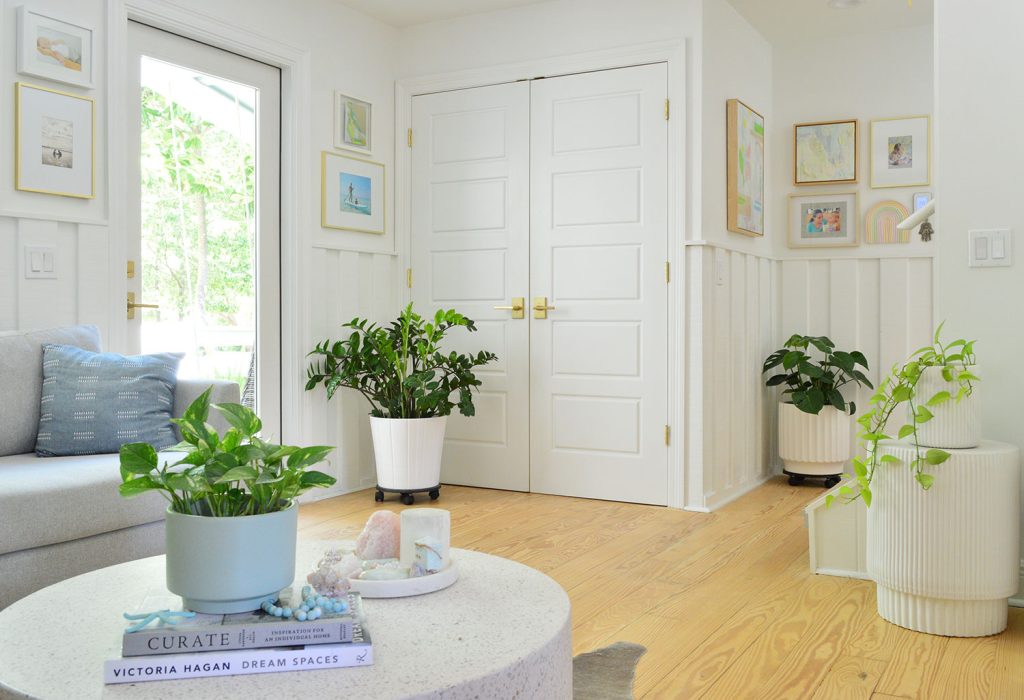

Low lighting can also mean rooms that receive limited or only shaded sunlight. These tend to be north-facing rooms, areas with few or small windows, and spaces where trees, balconies, or window coverings block most of the sunlight. The room pictured above checks almost all of these boxes.
And before you come down to your house for not being “sunny enough,” remember that most indoor plants don’t like direct sunlight anyway. Houseplants that are exposed to sunlight tend to have burnt, brown, or crunchy leaves. So shady spots away from windows may actually be more ideal for plant life than you realize!


In fact, low-light conditions often mimic the natural environment of these plants. You may notice that many common houseplants are tropical varieties. This is because tropicals do well at consistent warm temperatures inside our homes. But in nature, these plants grow on the forest floor, where they are adapted to living in the shade of a dense tree canopy.
Thrive or survive?
Many tours like this will advertise that these plants “thrive” in low light. This may be a bit of an oversell. Most plants truly thrive—which means they grow faster, fuller, and brighter (and maybe bloom too!)—the more light they receive. So, if your goal is to grow some big, award-winning plants: by all means, get more sunlight for this baby. Just keep it oblique or diffuse.
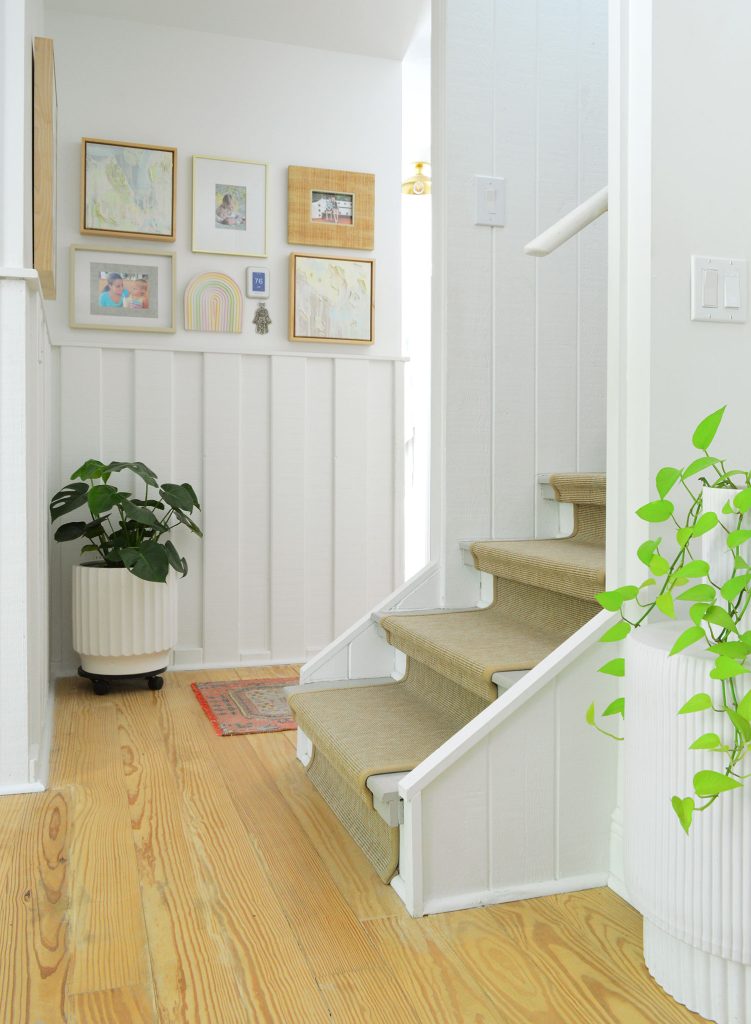

But for most of us, just keeping the plant alive and looking generally happy is the goal. We don’t want to die. We don’t want to waste our money. We don’t want some scraggly, brown plants about to die, shying us away from across the room. But we also don’t need them to double in size and look brighter in color than any other plant in the world. Here comes the role of these plants. They may not grow super fast in low light, but they are livable, low maintenance, and seem generally happy with this low light life. I mean that feels good enough for me.
Our favorite low-light indoor plants
This list was created from personal experience, expert input, and crowdsourced advice (we love a good Reddit thread about plants). We’ve also narrowed it down to plants that we think look beautiful indoors. Because — no offense — but some low-light plants aren’t our favorite. I’m looking at you, Peace Lily (who deflates so much and looks completely dead every time she gets thirsty). So, these are the ones we love and put (and have!) in our home:
Snake plant


Snake plants (Dracaena trifasciata) are one of the most popular low-light plants. They will grow faster in medium light but will still look tall, eye-catching and colorful in dim spaces. Snake plants are especially great for bedrooms because they convert large amounts of carbon dioxide – even overnight. Other members of the Dracaena plant group — such as cornflower (Dracaena fragrans), dragon tree (Dracaena marginata), and lucky bamboo (Dracaena braunii) — are also good choices for low-light spaces.
ZZ Factory
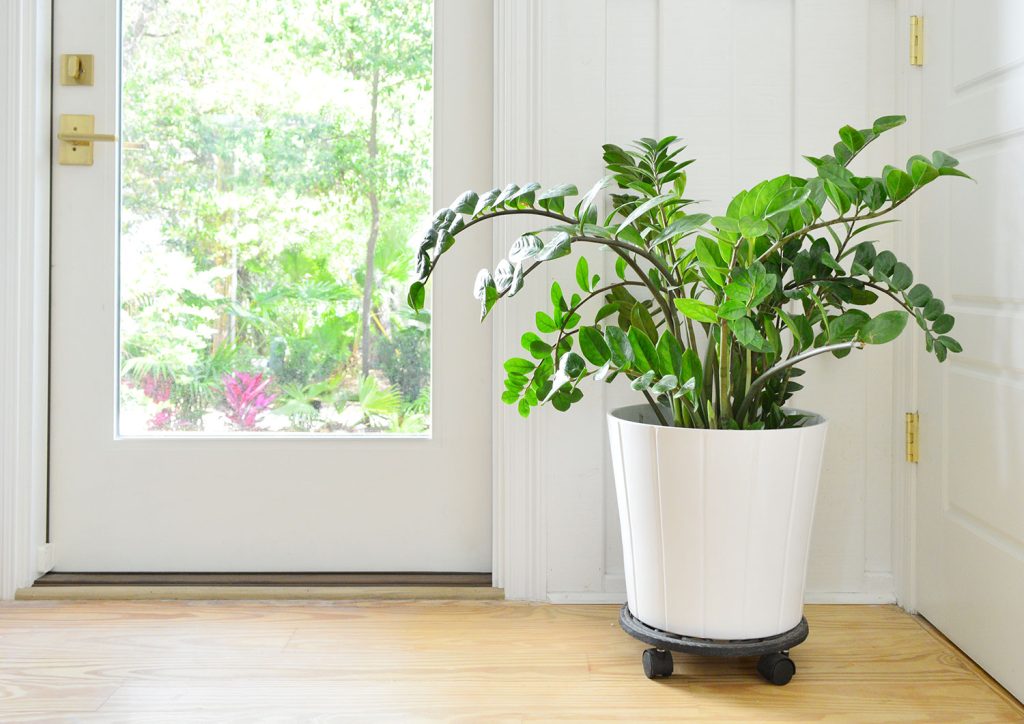

Ourl ZZ plants (Zamioculcas zamiifolia) have been some of our fastest growing plants, no matter where we put them. Also sometimes called the Jewel of Zanzibar, the ZZ plant is very drought-resistant because it stores water in the roots in the soil. Pictured above is one located near our north-facing front door, so it doesn’t receive direct sunlight. He previously lived happily in a dark corner of our hallway too. This is very easy.
Pothos


Pothos are our favorite low-maintenance houseplant that does well in a variety of conditions. The neon plant pictured above lives in a high, shady corner of our bedroom and has grown a beautiful trailing vine, even with minimal lighting. Pothos plants are hard to kill (they’ve earned the nickname “devil’s ivy”) and add a wonderful tropical vibe to any space, regardless of the lighting condition.
Heartliffe Philodendron
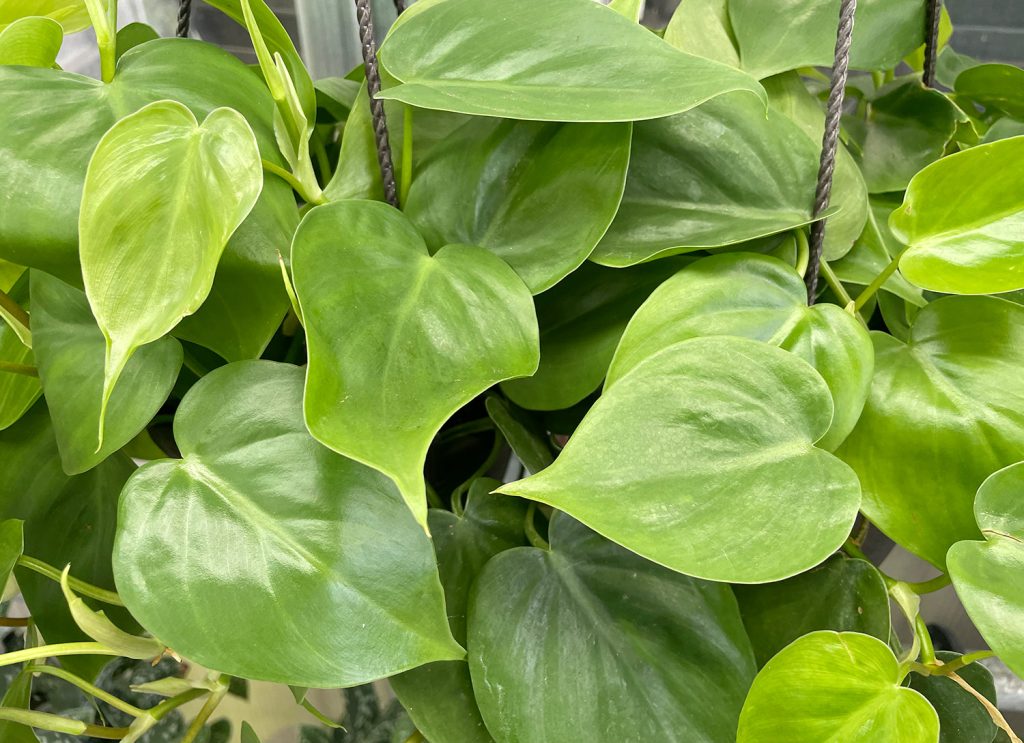

Heartleaf Philodendrons (Philodendron hederaceum) are very similar to pothos, and are often confused with each other. Both are ornamental tropical plants with spade-like leaves (although philodendron leaves tend to be—you guessed it—more heart-shaped). We don’t currently have any of these plants, but they are a great alternative to pothos, and they also do great in low light.
English Ivy
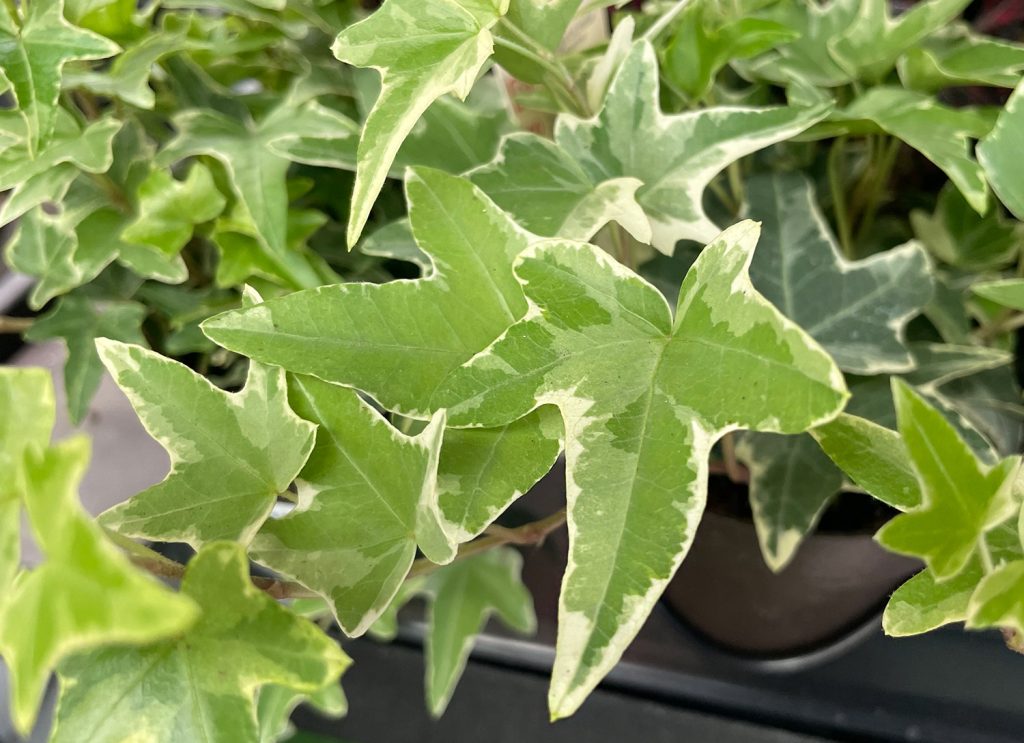

English Ivy (Hedera helix) is another indoor plant that is not picky about lighting. Like pothos or heart-leaved philodendron, you can train it to climb or leave it hanging from the side of a cabinet or shelf. We prefer the tropical look of pothos, but if you want a more traditional look, English Ivy is a great choice.
Aglaonema
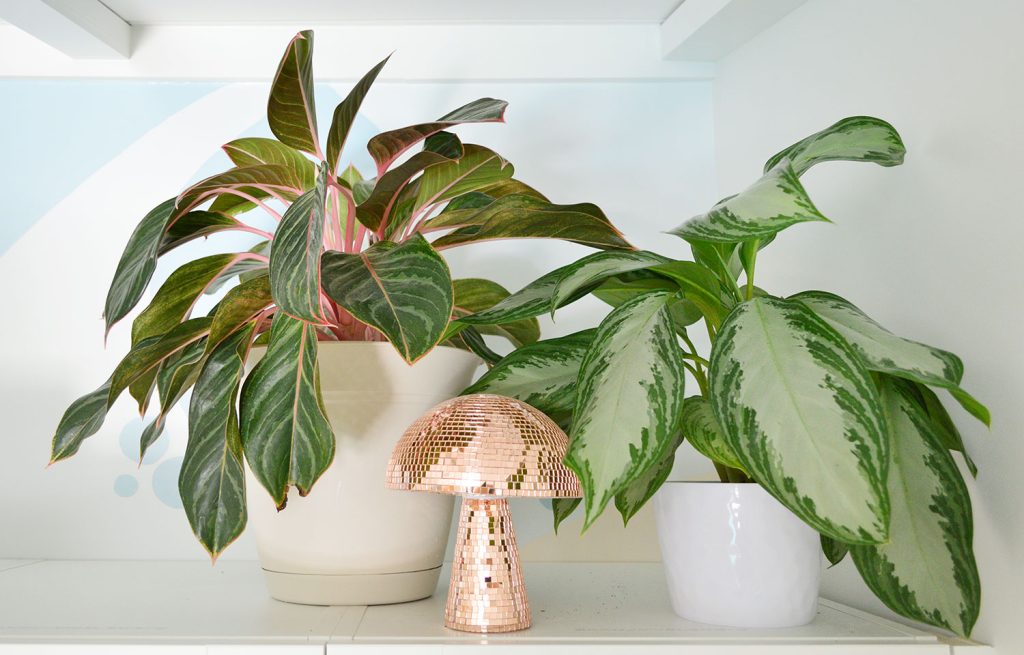

Sometimes called Chinese evergreens, plants of the Aglaonema genus are surprisingly tolerant of low light due to their lush, tropical appearance. We have two different types above our daughter’s closet—one of the darkest places in our house—and they love it there. Aglaonema is also great because it only needs watering every two weeks or so, making it good choices for out-of-the-way locations.
Cast iron factory
Cast iron plants (Aspidistra elatior) are another tropical species that has earned a reputation for being nearly indestructible, hence its nickname. They grow large tropical leaves (similar to Aglaonema) and also use the roots to store water for dry periods (similar to ZZ plants). They like a lot of indirect sunlight, but they do well in low-light places as well.
Monstera


Often called the Swiss cheese plant, Monstera deliciosa is another tropical beauty that we kept in non-bright locations in our house. More light will give you larger, more dramatic leaves. That’s why most monster owners recommend bright locations. But we included it on this list because having a dark space shouldn’t stop you from bringing monsters home. We have one that works well in a low-lit hallway.
Parlor Palm
The parlor palm (Chamaedorea elegans) is a dense, delicate-leaved palm that grows in leafy clumps. It’s a great way to make an indoor location brighter and more tropical. They will thrive in brighter places, but will also remain happy in a dark corner.
Other low-light plants


If none of our nine favorite low-light plants above feel like the right move for you, here are some additional varieties you can consider. We didn’t have a lot of these, and some of them we didn’t like visually, but we wanted to bring you more options. Some may also take more care.
Spider Plant (Chlorophytum comosum) Dragon Tree (Dracaena Marginata) Lucky Bamboo (Dracaena braunii) Peace Lily (Spathiphyllum) Staghorn Fern (Platycerium bifurcatum) Plant Fern (Adiantum pedatum) Dumb Cane (Dieffenbachia) Wax Plant (Hoya carnosa)
Signs that your plant needs more light
If you’re worried that your plant isn’t getting enough light, here are some things to pay attention to. But also keep in mind that plants die for various reasons. In fact, overwatering (not underwatering) is a frequent culprit. It can cause yellowing of leaves and rotting roots. This is especially true for plants in low light because they may not need as much water as plants in sunny locations, because the soil dries faster there. Make sure your pot has a good drainage hole and that your plant is not sitting in water.
Tends
Plants will search for light by growing toward the nearest source. This may cause your plant to lean or appear lopsided. Solution: Rotate your plant slightly each time you water it. Or move it to a place with multiple light sources.
Growth is leggy
“Leggy” refers to long, spreading stems or vines with plenty of space between the leaves. This could be a sign that your plant is straining to get taller to find more light, but it can’t maintain the lush leaf growth it has. The Fix: Long growth may continue if you don’t move your plant to more light or add a grow light. But you can also trim long stems to make them look their best. Use clean, sharp shears to cut the stem above the leaf node, trying not to take more than a third of the stem at a time. Propagate in water to develop new roots, and replant in the same pot to make it look fuller.
Leaf appearance
If your plant’s leaves have changed color or size since purchase – perhaps becoming less bright, green or variegated – this may be a sign that your plant is conserving energy. Or if the new growth is sparse or smaller than the previous leaves. Solution: If you can’t move your plant to a brighter location permanently, consider using a grow light or temporarily moving it to a brighter location to allow it to receive more light for a few weeks, especially during the spring and summer.
More plant guides


If you’re looking for more information on some of our favorite plants, check out some of these posts below:
*This post contains affiliate links, so we may earn a small commission when you make a purchase through the links on our site at no additional cost to you.

